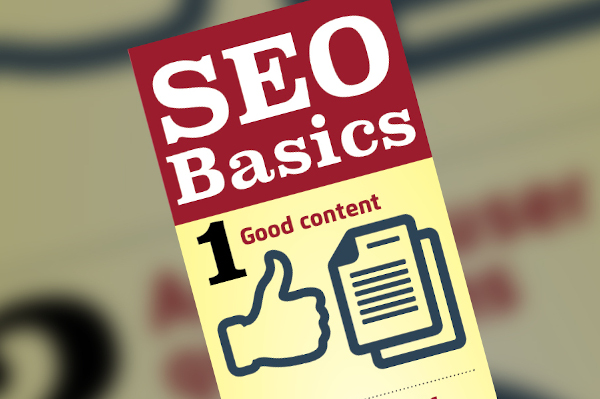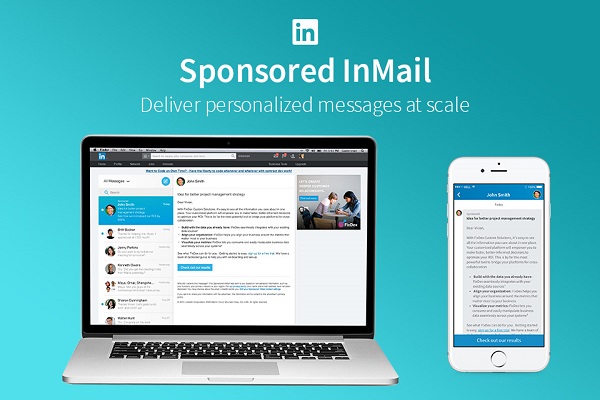We are sharing tips on:
- Finding stories
- Sending emails that matter
- Workflow
Listen Here
How to use email marketing to extend your conference’s reach.
Ready to Get Started?
Reach out to us to talk about your strategy and goals.

We are sharing tips on:
How to use email marketing to extend your conference’s reach.
Reach out to us to talk about your strategy and goals.

These findings from a national study of tuition pricing reflect exactly what we’re seeing in the field and why having a tuition pricing strategy is more important than ever. But let’s not get ahead of ourselves.
Pricing strategy is more than setting a high discount rate—it’s about analyzing a complex set of data that examines the combined effect of your current market price and brand value compared to your competitors. That’s why tuition pricing elasticity and brand value studies are indispensable. They look at a combination of data-driven factors that inform pricing strategy.
Pricing studies are always directed at inquiring students, applicants, and parents of these students, with the end goal of reaching your future prospective students and parents. Depending on institutional needs, these student groups can be segmented.
For example, you might direct a study at general inquiries and applicants, STEM students, athletes, or even students from different socioeconomic and geographic backgrounds. In many cases, public institutions cannot adjust tuition without approval from an authorizing board. However, many public institutions are free to make decisions about fee structures.
A pricing study offers considerable insight into how fees might be adjusted and communicated. Private institutions tend to have more freedom to adjust published price and net cost, and a pricing study can produce results that can immediately inform or confirm these strategies.
Without a doubt, justification is a prudent and necessary measure that data-driven pricing models can produce.
Using choice-based modeling (often referred to as choice-based conjoint) rather than simply looking at historical data, pricing studies allow you, with great precision, to:
Beyond pricing strategy, a tuition pricing elasticity and brand value study will allow you to:
As you might guess, it is especially useful to conduct a pricing study ahead of any changes in tuition or when building revenue models. For most schools, this means starting to conduct the study in Fall (though TPES studies can run through the next year).
Timing is especially important because it needs to coincide with student knowledge and decision-making. By fall, inquiring students and applicants begin to have a greater awareness of which colleges they are interested in, pricing, and what factors are unique about each college they are considering.
No matter the time of year, there’s never a wrong time to start thinking about your tuition pricing strategies. If you have any questions about how a pricing study might help you, email us for more information.
Reach out to us to talk about your strategy and goals.

Mariah Obiedzinski: I’m Mariah Obiedzinski, director of content services at Stamats. Joining me today is Sandra Fancher, chief innovation officer, and Joan Benson, associate vice president for digital and creative strategy.
Today, we’re talking about keywords. Every client always asks us for keywords, which got us to thinking, ‘Are keywords even relevant anymore? How have keywords changed? How has the use of them changed in website content and content marketing?’
So, Joan and Sandra, what are your thoughts on the history of keywords? Maybe going about 10 years back?
Joan Benson: Well, keywords used to be where it was at, right? This is what search engines looked for. They couldn’t really process language, so they would scan copy on a website or in something else and look for those hook words, those keywords.
But that is so old school now. It’s not really how the search engines work anymore. In part because, of course, then people who produce content started to stuff keywords into their content to try to game the system.
And the search engines then tried to get ahead of that. But eventually what happened is that the search engines became very good at natural language processing. So, they can understand what the sentences are. So, they don’t have to look for the keywords, which were just sort of these hooks in the content otherwise. They can actually process it.
And this is good both for people who produce content and for those of us who search for content because we can just type in our questions now. That’s how most people are. They’re asking questions of the search engines. And as we were talking the other day, now they’re actually simply asking them out loud.
I said, “type in the questions” and that’s the way I do most of my searching, is I type it in. But people who use Alexa or other voice-activated search devices, they just speak it out loud. They just say the question; they ask the question.
And because the search engine can process that question, they can then look for answers in content. And instead of looking for keywords, now the search engines are looking for answers.
Sandra Fancher: We have always, as humans, thought in questions and had problems, but because the search engines weren’t there, we changed our thought process to work with technology. Actually, like you said, dumbed ourselves down to keywords. And now the search engines have caught up.
There’s the proposals we see still are asking for the keywords. So, we need to jump back up, as humans, to how we use our search engines because they can handle our natural language and our natural thought.
So, when we see proposals that say, “How many keywords do we have,” that’s really not the proper type of question of scope that you want. It’s more around the type of content, the questions, the longtail—what are the problems we’re trying to solve? Not, “Give me a list of 50 keywords.”
Joan: Right. And you can use keywords as this sort of concept for the way people phrase their questions. You can translate this idea from being a specific set of words that we’re trying to get in there to the way people actually phrase their questions, and the words they use for that.
When I work in higher education, I often have to remind them that the 16-year-old searching for a college is not necessarily going to put in “undergraduate programs,” right? They’re going to say, “major, what can I major in?” They’re going to look for “dorms” not “residence halls.”
Sandra: So, you can still look at popularity of words, but more in context to the problem they’re trying to solve, like whether they’re looking to evaluate if there’s a fridge or there’s bathrooms in their individual rooms, or the pricing, or do they have dorms on campus?
Joan: Right. So, the keyword research can be helpful because it shows you what people are actually searching on and maybe what your competitors, what content they’re serving up that is responding to actual searches.
So, I think it’s still helpful to think about keywords as long as you think of that as the words that people are using when they’re searching for the content that you’re trying to deliver to them.
Because ultimately, that’s what you want. You want the content that you’re creating to connect with the users you’re trying to connect with. And so, you want it to work with the search engine.
Mariah: How do you respond, then, to clients who ask you, “Well, what is the search volume of this term? Or what’s our possibility of ranking for this term?” How do you reconcile that with what you just said, Joan, what people are searching for?
Joan: You, of course, do want to appear on the right search pages and you want to appear close enough to the top because nobody has the attention to keep scrolling for you. They’re not looking for you, they’re looking for the content.
My favorite infographic from the web, which is the periodic table of SEO success factors from Search Engine Land, which is a great blog on search factors. But anyway, one of the takeaways of this is that there are many factors that go into actually having search success, which is what you want. You want to show up in searches. And you want to show up near the top of searches.
And a single term is not going to do that. And ranking on a term is not going to do that.
Sandra: And what ranks for you might not rank the same for me because of all the algorithms of my history and your history and where I am sitting location-wise, so I think when I see a client say, “I went from position three to position one,” you might have done that for a specific set of audience, but not across the board.
So, you can’t just take that report as gold like you could in the past and report back. You have to kind of understand the whole universe.
And then also with Google snippets, when we talk about the need to show up, sometimes you’re not even going for the ranking, for the position, you’re going for that Google snippet. You want to be the answer in Google. And again, it comes back to questions. And if you’re only thinking about your ranking, you might be 10 down before it even gets to your first organic result because all the snippet pieces outrank even the Google rankings.
Joan: Right. And so, if you can actually answer their questions, you’re much more likely to be the Google snippet because you’re answering the questions that people come to their search box with.
In this periodic table, the most important single factor is content quality. And but also along there are “Have you looked at the words people are using? Have you done your research on that? And are you answering their questions?”
So, those are the key things; if you’re doing those things, and there’s so many other factors that go into search results. I think I know that as a user, as a search engine user, that where I am, that I get different results when I’m searching at an airport in New York or some place else, geolocation affects that.
My past searches affect that. When you look at this periodic table, you’ll also see there are a whole bunch of factors that are personal, that are off the page, that are out of your control. So, there are very many things that for ranking on one term…
Sandra: But it still comes back to good content that answers the user’s questions, not the institution’s questions. And we see that a lot. ‘Well, I’m answering this question, or that content is focused on internal users.’ This is not an intranet; this is the internet. But again, if you’re answering the user’s question, that’s really the best way to have an SEO strategy.
And years ago, YouTube started ranking really high. And now, Mariah, we’re seeing podcasts, which obviously we’re on one. Podcast is now a new way to rank high in Google Analytics. So, not only writing good content, but using the format that people want to consume the content.
Joan: Right. And providing content in multiple formats actually raises your ranking as well because they know that people want to consume in different media and in different venues. Sometimes you’ll want to watch the video, sometimes you’ll want to read the story.
Sandra: Right. And having the transcript on the video, because what is it, like 50 percent of the people watch video on Facebook with no sound. So, we have to have that transcript, again, all the different pieces. So, again, it comes down to the basics: good content, answering the question, and delivering it in the format that the user wants to consume it in multiple ways.
Joan: I often think of it as it’s almost a virtuous—it forces a virtuous approach to content. You want to actually serve your users. You create content that serves the users instead of your own institutional, self-serving ends. In the end, you want to serve the institution, absolutely. But you do that by serving the users.
Sandra: Serving the users. But that makes it hard. That means you have fresh content and you have to write content. You can’t necessarily pull over content from several years ago on your site.
Joan: Right. Yes.
Mariah: And I think it’s important, we’ve talked a lot about how to get people to your page, how to get people to the information they’re looking for. I think it’s always important for these content conversations to include a call-to-action strategy too. Because once you get them there, one of the ranking factors is, “How can you get through this page? Is this delivering what I want?”
And a way to tell that is whether they convert in some way. Did they look at the form you wanted them to look at? Did they click on the link? Did they watch the video?
Joan: Did they turn on the sound to watch the video?
Sandra: It’s always good when someone comes to you and says, “I want to put this content up.” Say, “What question would the user have in their mind that would get them to this page”’ And then, “What do you want them do once they get to this page?”
So, if you think of a page as just one step in a journey instead of the piece, that is really key to success of the conversion and SEO.
Joan: And as consumers, we need more content the bigger the question is. Right? So, if you’re trying to buy a pair of socks, you don’t need a lot of content. If you’re buying a car, you need more. If you’re buying a house, you need a whole lot more.
If you’re buying a college education, you need a lot of content. The next conversion is probably not, “Get them to apply and enroll in higher education.” It is to get them to look at the next piece of content.
Sandra: Consume more.
Joan: Consume more. Because that’s how they get to the conversion that you really want to count, is by getting them to consume more content, when you’re talking about complex decisions.
Sandra: Right.
Mariah: So, if you have an organization or if one of your clients is interested in really digging deep and working on their SEO strategy, what should be their next natural step to get some help from you?
Joan: It really depends what their challenges have been up to this point. Do they have trouble producing fresh content? We can help with that. Do they have trouble optimizing? Do they have trouble getting out of institution-speak and getting a voice that really speaks to users? We can help with that as well.
Sandra: Or as the marketing team, they understand where it needs to go, but they have a lot of change management issues, a lot of politics, a lot of pushback.
Sometimes we are that group that helps translate that and kind of takes the burden of telling the story of, “This is not written for you. This is not about your department. This is about the user.” So, we can really help on that, even when it’s change management. By audits, showing them a little bit of a before and after. Sometimes they’re like, “Oh, now I see it. Now I get why this sounds so much better. This would have a better outcome for the user.”
Joan: I’ve found in higher education, again, this is where I do most of my content work, actually doing readability scores on content helps higher education people understand…
Sandra: “But they’re all in higher education, so we should be writing to the 15th grade level.” Just kidding.
Joan: I have assessed copy that was at the 26th grade level and I had to explain, “Now, I know you’re trying to recruit graduate students, but nobody is at the 26th grade level.”
Sandra: Right. And it’s hard…
Joan: It’s hard to read.
Sandra: It just makes it hard. And it’s simple. You wouldn’t talk that way to someone.
Joan: And people don’t use search engines at their highest education level, right? We use search engines, we still use them fairly simply, we ask simple questions, or we ask exactly what we want. “How different is pecorino from parmesan? Can I use them in the same recipe?”
Mariah: “Tacos near me. Also, MBA programs.”
Joan: “MBA programs with good taco trucks.”
Mariah: Well, if you’re interested in getting some help with your content, with your SEO strategy, or with your CTA strategy, you can email Sandra at [email protected]. You can email Joan at [email protected]. And my last name is horrible, so you can email one of them and they can give you to me ([email protected]).
Also, we’ll have those links in our transcript, because that’s good SEO best practices. Thanks for joining us today on the Higher Ed Voices podcast.
Reach out to us to talk about your strategy and goals.

In this episode of the Stamats Insights Podcast, we are discussing data hygiene as it relates to all types of data, including:
Stamats Account Manager Melissa Chapman tells me that “good data hygiene requires thought and planning to ensure that all of your data fields- both contact information and demographic information- are current and accurate.”
Contact Melissa to learn more about how you can maximize data management.
Reach out to us to talk about your strategy and goals.

Others implemented paid marketing rules that made it tough for higher education organizations to connect with relevant audiences in a meaningful way.
LinkedIn has transformed to a more flexible and user-friendly platform that prioritizes the needs of both advertisers and users. Through a strategic alternative to email marketing, LinkedIn InMail allows marketers to craft meaningful, personalized messages and deliver the content directly to the inboxes of targeted audience members.
While sponsored InMail campaigns can cost more than Facebook Messenger ads, InMail has been shown to effectively reach higher education prospects in a relevant way with measurable results.
Mount Mercy University in Cedar Rapids, Iowa, considers InMail to be a step beyond standard social media advertising. The university began using InMail in summer 2018. Elyse Robinson, Digital Marketing Coordinator, says InMail has proven to be more targeted and measurable in terms of success than standard social media ads.
“We have seen that it is working,” says Robinson. “We generate anywhere from seven to 13 leads per campaign. Our RN-BSN program saw increase in registration after we targeted with an in-mail campaign.”
Targeting audiences with tailored, relevant messaging is key for InMail success. Most messages Mount Mercy sends are related to specific graduate degrees and include more detail than a typical social media post. The team also includes personal verbiage to connect with the user, such as, “We think you would be a great fit for this degree.”
Robinson often links InMail messages to current, relevant web pages on the Mount Mercy site to encourage action. All messages also include a specific call-to-action to fill out a form for more information or connect directly with a program director.
As with any social media content initiative, marketers should align goals for the messages rather than taking a “spray and pray” content approach.
All messaging should focus on the user’s needs in a “what’s in it for you” approach.
Track return on investment: Users might open and read your message, but what do they do next? Consider using a vanity URL or phone number in your messaging to directly tie back conversions to the campaign.
Though many higher education marketers have not yet tried InMail marketing, Robinson encourages them to explore the feature. “If you can do a trial campaign and show the directors the outcome, it will be easier to get more leadership on board.”
Reach out to us to talk about your strategy and goals.

With thoughtful planning and testing, you can help make your website experience more accessible to users with visual, hearing, and cognitive conditions such as autism.
As such, and in celebration of Global Accessibility Awareness Day (GAAD), we compiled this high-level overview to help stimulate conversation and action around accessibility, why it’s so important, and how organizations can create and update more accessible sites.
Accessibility in the website world refers to a process of developing, designing, implementing, and testing back- and front-end functionalities and features that allow individuals with different abilities to more easily engage with web content.
When we talk about web content, we mean more than just words on a page. Content also includes sounds, images, dynamic content, module content, multimedia widgets, and mobile functionalities.
Public-serving industries such as health care and higher education must adhere to minimum accessibility guidelines or they will receive notices or potentially fines from the U.S. government.
In talking with our clients, we’ve pinpointed four common areas that organizations tend to overlook in development–and ideas for testing and refining for better accessibility.
Developers are challenged to experience their sites from the perspective of a differently abled person by accessing the web with a range of considerations in mind:
Every site we design is fully accessible, meaning we proactively design and develop to meet or exceed WCAG 2.0 and Section 508 standards alongside client preferences. We validate the success of our sites by involving third-party testing for responsiveness, usability, and accessibility.
As you test your own site, it can be helpful to have someone unaffiliated with your organization review your pages to uncover usability issues you might not notice day to day. No site will ever be 100% error-free, but it’s imperative to continue trying to get as close as possible. We can always do better—and that’s what GAAD is all about.
Ready to move toward a more accessible website? Schedule a free accessibility assessment now.
Several colleges and community organizations are holding accessibility events this year. Find a full list of GAAD events near you.
Reach out to us to talk about your strategy and goals.

My answers, respectively, are Drupal, Tesla, and Miele. If that sounds simplistic, that’s because I often don’t have enough information to make a recommendation. All I can provide is an opinion based on many assumptions. Just as you may not want to get a Tesla S to haul two-by-fours to a construction site or get a Miele dual-range oven for a tiny house, Drupal may not be your best choice of CMS for your small private liberal arts college.
However, you can certainly try to make those work and succeed, but it’s probably not sustainable in the long run, especially during critical moments like admissions applications, class registration, and final exams. As with any real answers, the best CMS for you depends on several factors, but here are a couple to get you started:
Almost all colleges will have a pretty decent server hardware (or cloud hosting) to get them this far in this digital age. However, the question about resources goes beyond technology and into your staff’s expertise. A single part-time web developer can probably manage a CMS at a small college, but they are also likely to outsource a large amount of the back-end IT services.
For example, WordPress is very easy to publish and maintain, but if something critical breaks, you’ll need to have the right staff who can develop code or handle database and security issues. On the other hand, proprietary solutions like OmniUpdate and Cascade will generally have maintenance built into the agreement to help your limited staff, or will charge a one-time fee to resolve your issue
Back when I worked for newspapers, I would visit restaurants and be amazed at their commercial kitchens, where line cooks, sous chefs, and chefs interacted in an intricate dance to prepare dishes. Sometimes this dance would happen in a tiny room that felt like the size of a one-car garage, while others felt like an airport hangar. The result was always an expertly crafted dish, but the difference was the number of diners each restaurant could serve every night.
Similarly, your web visitors are not only your current students but also the prospective students to whom you are marketing. Your workflow and marketing strategy will dictate the size of your kitchen—or, in CMS terms, the amount of communication services required. Such services might, for example, include whether the CMS needs to log each author’s revision, submitting posts to the editor for review, communicating with subject-matter experts, coordinating with a proofreader, adding the metadata, communicating with the graphic designer or photographer, and so on. Unless you’re upgrading to a newer version of your current CMS, be willing to adapt your workflow to the new technology.
Changing a CMS can be as drastic as a kitchen renovation, but sometimes it is necessary to address the immediacy of digital enrollment and marketing as you resolve problem areas, update content, or scale up your operations. As you decide to make the change, also learn what the new CMS can do and how it can help you develop new strategies.
For one, how can you effectively integrate it with your customer relationship management (CRM)? Will you be able to capture more visitors at various parts of your admissions funnel? How can the new CMS help you track your return on investment better? A few CMSs can perform all those functions out of the box, while most others will require installing third-party modules and customizations of some level to fit your strategies. Lastly, assess whether your web team, university relations, and admissions have the capabilities to leverage the new feature and to coordinate with one another in the CMS.
As your new CMS comes online, develop governance to prevent the website from becoming a Galapagos Island with dozens of subsites, with each one of them looking like an entirely new institutional website. Some CMSs allow you to install a multi-site configuration that allows for easier maintenance—such as, global installation of patches and security fixes. However, not everything can be automated, and there are many governance models to help your team or committee develop standards and enforce a universal brand look. If a college or department insists on having a unique look and feel, they must be able to have the resources—staff, technology, and know-how—to maintain their slice of the website. Otherwise, their boutique site will cost your central IT’s time and budget. Worst, the boutique website will probably confuse first-time visitors to the site.
All CMSs are designed for a certain workflow under a certain technology environment, and the issue at hand is how to match resources (technology, human capital) to the right CMS. For us, a discovery visit uncovers many of those issues by interviewing key stakeholders, IT staff, administrators, communications departments, and content authors to understand how the existing CMS works (or doesn’t). We also interview students to understand how they perceive your brand, interpret your content, and navigate the website.
Another dimension of the discovery visit is to look at your marketing materials, research, and traffic analytics data to get a holistic view of your marketing efforts. After all that information is collected and analyzed, we will recommend an open source or a proprietary CMS. Each CMS will cover the most common set of teams found in most higher education institutions—from a two-person web team with shared IT resources, to a full web army spanning several colleges, each with their own developers, designers, public relations person, and more.
At the end of the day, it’s all about the best technology fit for the team that you have. If that Miele range oven won’t fit your tiny house, what you’re probably looking for is a food truck. We can help you build it. Email us today to schedule a free consultation.
Reach out to us to talk about your strategy and goals.

Shannon NIcholson X (formerly Twitter)
Reach out to us to talk about your strategy and goals.

Others implemented paid marketing rules that made it tough for higher education organizations to connect with relevant audiences in a meaningful way.
LinkedIn has transformed to a more flexible and user-friendly platform that prioritizes the needs of both advertisers and users. Through a strategic alternative to email marketing, LinkedIn InMail allows marketers to craft meaningful, personalized messages and deliver the content directly to the inboxes of targeted audience members.
While sponsored InMail campaigns can cost more than Facebook Messenger ads, InMail has been shown to effectively reach higher education prospects in a relevant way with measurable results.
Mount Mercy University in Cedar Rapids, Iowa, considers InMail to be a step beyond standard social media advertising. The university began using InMail in summer 2018. Elyse Robinson, Digital Marketing Coordinator, says InMail has proven to be more targeted and measurable in terms of success than standard social media ads.
“We have seen that it is working,” says Robinson. “We generate anywhere from seven to 13 leads per campaign. Our RN-BSN program saw increase in registration after we targeted with an in-mail campaign.”
Targeting audiences with tailored, relevant messaging is key for InMail success. Most messages Mount Mercy sends are related to specific graduate degrees and include more detail than a typical social media post. The team also includes personal verbiage to connect with the user, such as, “We think you would be a great fit for this degree.”
Robinson often links InMail messages to current, relevant web pages on the Mount Mercy site to encourage action. All messages also include a specific call-to-action to fill out a form for more information or connect directly with a program director.
As with any social media content initiative, marketers should align goals for the messages rather than taking a “spray and pray” content approach.
All messaging should focus on the user’s needs in a “what’s in it for you” approach.
Though many higher education marketers have not yet tried InMail marketing, Robinson encourages them to explore the feature. “If you can do a trial campaign and show the directors the outcome, it will be easier to get more leadership on board.”
Reach out to us to talk about your strategy and goals.

We will call the first group of adult students the Practicals.
Practicals are driven by the financial betterment of themselves and their families. While all adult students value learning, the Practicals especially value learning that will impact their ability to either obtain or retain employment. That’s why the majors of most interest to adults tend to be career focused (i.e., business, nursing).
In this regard, adults are interested in how their program will enhance income potential, promotions, job security, and other career-related opportunities.
When communicating to practicals, keep in mind that they are driven by jobs and careers. Show how adults like them have in fact achieved those types of goals. Cite placement, promotion, and salary data and organize it by program. Practicals value the concept of—but tire of the wording—“real-world experience.”
The second group of adult students are the Dreamers. This group comprises two sub-groups: Starters and Finishers.
Starters have long desired to go to college, but life (work, family, other responsibilities, and finances) have prevented them from attending. For Starters, college is a new experience. While their motivations may be practical, they are almost never solely practical. Dreamers, like all adult students, are interested in majors that lead to specific careers, but at least a portion of dreamers are less career-focused.
Starters will require a bit more handholding. They will have higher levels of uncertainty, even fear. Often they will not know what questions to ask so be forward leaning in your communication. Walk them carefully through every process and step. As with other adult students, show Dreamers how adults with similar backgrounds have been successful at your institution and beyond.
Finishers are people who attended, but did not complete college. For many, their life circumstance has changed and college is again an option. Finishers may have decidedly practical motivations, but underlying those motivations is a desire to finish something they started. They want to close the loop.
In most cases Finishers already understand the value of college so your messaging needs to focus instead on completion. Show the resources you have to help Finishers complete their programs and move forward.
In the final analysis, successful marketing will depend on your ability to first understand the motivations of your adult students, and then on your ability to effectively customize the messaging.
Interested in discussing how to effectively attract adult students? Let’s connect. Send me a message at [email protected] or leave a comment below.
Reach out to us to talk about your strategy and goals.